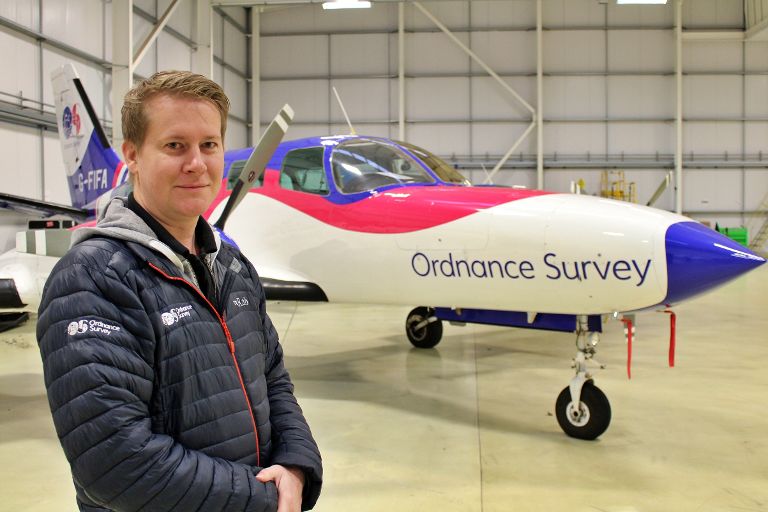My Winter - Air Camera Operator Roger Nock
Roger Nock is an Air Camera Operator and Field Surveyor for Ordnance Survey, responsible for capturing photographs across Great Britain, making a huge mosaic of the nation.

Surveying in Winter
During winter we are unable to carry out aerial survey work due to the specification we must adhere to, particularly the longer, darker shadows due to the lower winter sun angle. The landscape also changes dramatically due to the seasons. For example, trees and hedges lose their leaves which make for a confusing picture when trying to match up winter imagery with any taken in the summer months. To ensure the imagery of the mosaic looks consistent across the country we avoid taking photos of snowy landscapes too.
Strangely the lack of leaves on the trees in winter can help in the use of our GNSS receivers. It allows us to work much closer to vegetation or even under tree canopies and still get a decent fix of satellites orbiting above. In the summer when the trees are in full leaf we will often have to offset or measure in to the harder to reach fence lines or hedge centreline positions.
My job role can change quite a bit during winter, when the flying season finishes midway through November, I return to field surveying. This is the physical process of adding geographical features and data to the OS MasterMap by visiting new or expanding sites that need to be added to the map. As the winter months progress, we will be given our new flying season programme of work. This then involves planning all the years flying sorties mainly from home and sometimes in the office.
How does the weather affect my job?
Strong winds, thunderstorms and fog can affect the safety of flying operations. We also generally rely on crisp cloudless skies to capture the images. The images need to be crystal clear for the use of our change detection processes and the office based capture of new sites to be added to the MasterMap.
When out surveying we have to be ‘all-weather’ surveyors. Only on days when weather warnings are in force, do we stay inside. Sometimes health and safety constraints on building sites (icy or windy conditions) may also force us to take a day working from home. Heavy rain can take its toll because using a tablet stylus can become difficult. A whole day’s rain or freezing weather begins to affect the use of your fingers. We often have to make notes or use tape measures / electronic distos , which can become difficult. A heated seat in the car certainly comes in handy! Heavy snow can also be a factor, snowy weather makes travelling to sites more difficult and when you arrive, surveying roadside features such as kerbs or changes in surface can become tricky.
How do you check the forecast and how often?
I’m fairly obsessed with watching the weather because of my flying role, but I also take this approach when working out in the field too. I usually check the night before, then again in the morning. This usually involves looking at the forecast on the TV and then a look at the Met Office weather map. Live satellite imagery or rainfall radar view give me a good heads up when out on site.
How do you plan for winter weather?
We have access to cold weather gear, so we should always have the right type of kit to wear depending upon the weather conditions.
I usually add a few more useful objects to the boot of my car. Whilst travelling to survey sites you can get caught out in changing weather. On top of my usually all-weather gear I carry items such as extra water, a snow shovel, towels, an extra jacket and sometimes a sleeping bag.
Days on site can also sometimes be shorter due to the health and safety aspect of the failing light. This means more time working from home which requires an extra level of self-discipline to ensure I remain undistracted by the familiarity of being at home.


